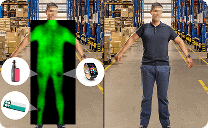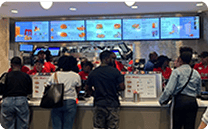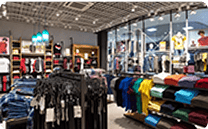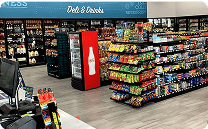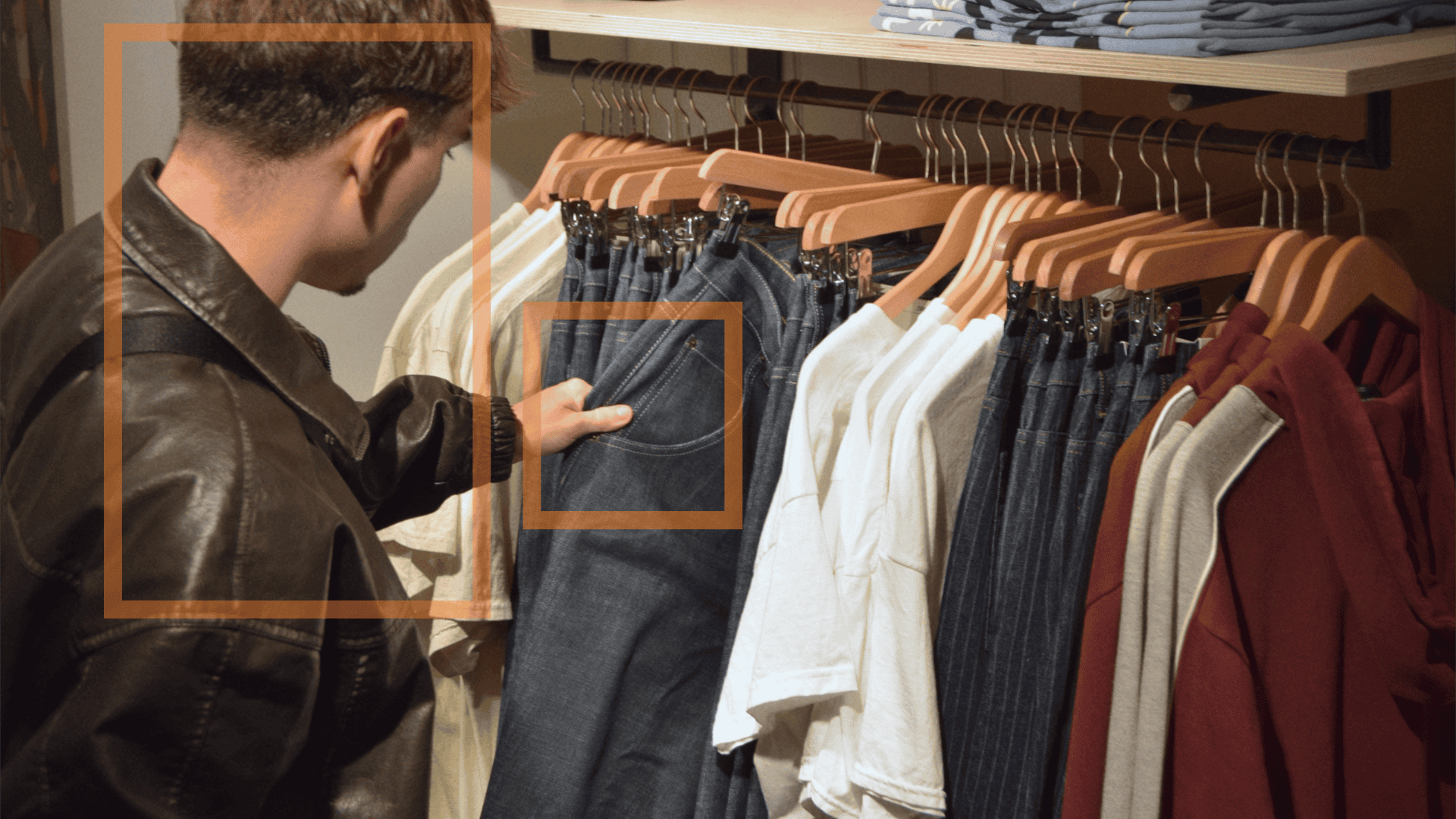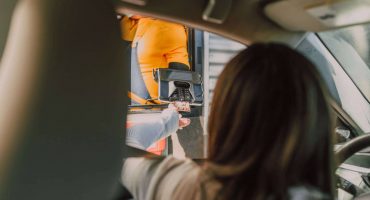In This article
Introduction
Operating a retail store in the 21st century is challenging, from brand building to customer service, inventory control, labor issues, and financial management, among many others. The biggest challenge may be loss prevention systems in retail stores and their impact on sales and the bottom line. Without strong loss prevention strategies, retailers will have difficulty sustaining their businesses and maintaining a safe and secure shopping and work environment.
Overview of Loss Prevention in Retail Stores
Retail loss prevention is a proactive effort to plug security gaps in the physical store and a store’s digital presence, all to reduce shrinkage. Through careful planning, implementation of equipment and systems, employee training, and following best practices, retailers can minimize intruder incidents, achieve tighter inventory control, and motivate staff to be more aware and committed to loss prevention in retail stores.
Common causes of retail shrinkage:
- Shoplifting is the focus of many retailers when implementing strategies for retail loss prevention.
- Inventory theft by employees is another major contributor to shrinkage.
- Employees are typically responsible for transaction fraud, manipulating the payment process, and purposely mishandling cash.
- Vendor representatives and delivery drivers can participate in fraudulent activities, such as skimming deliveries and backroom theft.
- Natural disasters and emergencies can damage inventory.
- Inadequate inventory control and irregular audits can result in the disappearance of merchandise.
- Poor management of employee activities, at the cash register, and in the backroom.
- Mispriced merchandise leads to the loss of anticipated margins and items purchased at less than cost.
Advanced Surveillance Technologies: Key Components
With retail shrinkage costing retailers billions of dollars annually, their best response is to rely on advanced surveillance technologies. Many are equipped with Artificial Intelligence (AI) and Machine Learning (ML) capabilities to fight loss prevention in retail stores aggressively. The array of advanced surveillance technologies available to retailers gives them more retail loss prevention tools and options to address their unique shrinkage challenges.
CCTV and Video Monitoring Systems
The best-trained employees can’t constantly monitor the shopping floor, customers, vendors, and inventory movement. CCTV and video monitoring systems are a constant set of “eyes,” always watching, scrutinizing, and analyzing what they see. Their role is critical to maximizing loss prevention in retail stores.
Although CCTV for retail store security has been used for decades, more recently, CCTV technology has advanced significantly.
- 360-degree security cameras have a wider view, excellent video quality, and other enhancements. Their configurations include two-lenses, multi-lenses, fisheye lenses, and PTZ (Pan-Tilt-Zoom).
- Thermal imaging CCTV cameras overcome low-light or total darkness conditions to detect and stop intruders quickly.
- AI algorithms in CCTV and video monitoring systems allow for significantly improved object and facial recognition, motion detection, and real-time alerts.
- 5G connectivity not only improves the video capabilities of CCTV for a retail store but also delivers a large bandwidth, low latency, and high-speed data transfers, maximizing the value of AI.
AI-Powered Analytics
AI has tilted the playing field in favor of retailers focused on retail loss prevention. Video data analysis with AI algorithms reveals deeper insights and actionable intelligence than what cameras see and their recordings. Retailers’ security strategies and responses to security incidents are based on detailed data and contribute to operational efficiency.
- Retailers are very interested in AI’s capability to analyze the behavior of customers, employees, and vendors to prevent shoplifting and fraud.
- AI-powered analytics can recognize suspicious patterns and use what is learned to predict future incidents through profiling and evaluating peak periods of suspicious activity.
- AI enhances the analysis of CCTV cameras’ objects and facial recognition to discern the difference between benign and dangerous objects and provides faster responses to unauthorized intruders.
- AI analysis can also positively affect retail profitability by reviewing customer shopping patterns and placing merchandise in high-traffic areas.
RFID Technology
Poor inventory management is often a major contributor to shrinkage at retail stores. After all, a store’s merchandise is what is exchanged for customers’ money, so lacking proper inventory control has a direct bearing on profitability, the bottom line, and business sustainability. RFID for retail is one of the advanced surveillance technologies necessary to maximize retail loss prevention. Instead of surveilling customers and employees, RFID technology is surveilling inventory and its movement.
- Tracking inventory in real time allows retailers to know the location of every item, especially if one is under a shoplifter’s coat.
- Internal theft is more likely to be detected and addressed with RFID tags on all merchandise.
- RFID tags can also be affixed to store equipment. Its loss or damage may not affect shrinkage directly, but can lead to unexpected repair or replacement costs.
- Inventory is an asset; it has monetary value. Failing to control inventory flow into the back door, through the store, and out the front door causes operational errors and makes loss prevention in retail stores more challenging.
Cloud-Based Surveillance
Cloud technology benefits many businesses and organizations, including retail stores. Cloud-based security systems equip any retailer with stronger means to address retail loss prevention. Retailers can develop and implement store security strategies with more flexibility and have more data at their fingertips.
- CCTV camera recordings require devices with large storage capacities. Before cloud-based security systems, hard drives filled with video data had to reside on the retail premises. Cloud storage is only limited by the storage volume purchased.
- Retailers can achieve cost efficiency because onsite storage devices and viewing equipment are unnecessary. Cloud technology is automatically updated and maintained, so retailers can reduce the need for IT personnel.
- Cloud technology is easily scalable, adding more access locations and storage capacity as business conditions change.
- Remote access is another primary benefit of cloud-based surveillance. Managers or security personnel can review video footage from any location anytime.
Steps to Implement Advanced Surveillance Systems
Some retailers don’t realize all the advantages of advanced surveillance systems for improving retail loss prevention. They know they need these advanced technologies but proceed haphazardly or disorganized. This often results in busting the security system budget, creating delays, and ineffective and weak employee commitment.
- Conducting a risk assessment is the smart place to start. Retailers can’t know how to implement advanced surveillance systems until they identify their security gaps. These can occur at the points of entry for customers, employees, and vendors, the shopping floor, the transaction counter, the inventory area, and the office.
- The next step is to use risk assessment to develop a security system plan. It should include loss prevention goals, expressed in terms of cost savings, reduced inventory loss, and other objectives, all contributing to retail loss prevention.
- Establishing a budget is crucial because any investment in security systems for retail stores must deliver an acceptable ROI.
- Selecting the right surveillance technologies should now be easier. Retail surveillance professionals’ guidance can streamline this step and ensure the chosen technologies can do the job.
- The installation and integration of advanced surveillance systems should be smoother, with fewer delays and disruptions to customers’ shopping trips and employees’ work.
- Employee training and retraining in new technologies and systems is essential to the implementation process.
Best Practices for Optimizing Surveillance Technologies
When advanced surveillance systems are paired with best practices, retailers are more likely to achieve a high level of retail loss prevention. Once these systems are installed, they must be utilized every day, every week, and always. Management and staff can contribute to maximizing the value of an investment in advanced surveillance technologies by learning and following best practices.
- Regardless of the advanced surveillance technologies retailers add to their security strategy, they require regular system maintenance and updates. The physical devices should be inspected and cleaned, and the interconnected system of cameras, monitoring devices, remote access, and other equipment should be tested for optimal performance.
- Reviewing and changing passwords periodically and adding two-factor authentication can help deter hacking of security systems for retail stores.
- Integrating advanced surveillance technologies with a store’s POS is another best practice. Cameras can view transactions for suspicious activities. POS data compared with video footage reveals customer behavior in more detail.
- GeoAI, or leveraging AI and geospatial intelligence, delivers various security benefits to retailers. More data processing and analysis tasks are automated, and processing occurs faster and more accurately.
- Protecting customer and employee privacy is critical to employee security training and monitoring. Data storage systems may require encryption or other security measures to prevent access to sensitive data.
Emerging Trends in Surveillance for Retail Loss Prevention
The great advantage of advanced surveillance technologies for retailers seeking to improve retail loss prevention is that there are so many emerging trends to help them achieve that goal. In the past, surveillance was somewhat rudimentary compared to today, and that’s because of the great leap forward in camera, monitoring, data storage, analysis, and other technologies. More choices exist to create tighter, more effective security systems for retail stores.
- The most notable trend is the widespread application of AI and machine learning across the entire spectrum of businesses. These technologies’ capabilities include high-quality object and facial recognition and motion detection; in-depth analysis of video footage to better understand customer and employee behavior; and real-time monitoring and precise alerts of intruders and suspicious activities.
- Multi-sensor systems, especially in surveillance cameras, are like doubling security. Retailers don’t need multiple cameras, which reduces equipment and installation costs. Connected security sensors ensure alarms can be heard throughout a retail store.
- The Internet of Things (IoT) continues to mature, delivering many benefits for retailers focused on retail loss prevention. Video and other data are remotely accessible, and IoT interconnectivity ensures a store’s entire security system performs in real time.
- Advanced surveillance technologies are designed for store security sustainability. Retail loss prevention is a constant and long-term goal for all retailers, so security equipment and systems must be maintained and updated regularly.
Case Studies and Practical Examples
TXB Convenience Stores
DTiQ’s 360iQ platform is an advanced surveillance technology that greatly benefits TXB, a chain of over 25 convenience stores. Not only are the video images much better than those of TXB’s previous security cameras, but the app also provides remote access, audio capture at registers, and critical insights to improve employee training.
Capriotti’s Restaurant
DTiQ’s SmartAuditTM has been instrumental in revealing many transaction frauds and employee thefts at Capriotti’s. Product and inventory tracking has improved significantly. The owner can track more items daily, which makes it easier to catch employees stealing.
The use of AI-powered security cameras has contributed significantly to retail loss prevention. In one instance, a clothing store monitors after-hours deliveries and suspicious activities. Many retailers also benefit from RFID technology and, in some cases, a 55% reduction in inventory shrinkage.
Some retailers use advanced surveillance technologies uniquely to be more secure and reduce loss from shrinkage. Employees can wear cameras to deter aggressive intruders and gather evidence for arrests. Retailers can track movement in specific store zones and detect unusual behavior.
Conclusion
Shrinkage and other causes of retail loss remain a considerable challenge for all retailers. Implementing advanced surveillance for loss prevention in retail stores is the best strategy for reducing loss, improving management, and improving overall operational performance. With the right investment in CCTV for retail store surveillance, RFID for retail inventory control, and cloud-based security systems, retailers can achieve maximum asset protection and an outstanding ROI.
Implementing advanced surveillance systems requires careful planning that starts with a risk assessment. In addition, retailers who want the most benefits from these systems also need a complete set of best practices for optimizing surveillance technologies. Retailers also benefit because these technologies are dynamic, constantly evolving, and are equipped with new features and functions. Visit the website to learn more about DTiQ’s loss prevention services.
Frequently Asked Questions
Q: What is retail loss prevention?
A: It’s a proactive and comprehensive plan to minimize shrinkage caused by shoplifting, employee and vendor theft, financial fraud, damage from emergencies, and operational errors.
Q: What advanced surveillance technologies can retailers implement to help them combat retail loss?
A: CCTV for retail store security and video monitoring systems are more sophisticated. Cameras have much higher resolution and come in various types to satisfy any retailer’s specific needs. RFID technology is essential for tracking and auditing inventory throughout every item’s retail journey. Cloud-based surveillance saves money on onsite storage, offers more storage options, and allows for remote viewing and analysis of video footage and other data 24/7 from anywhere.
Q: How do AI and machine learning contribute to retail loss prevention?
A: AI and machine learning are responsible for many of the advances in surveillance technologies. CCTV cameras with these capabilities can do more without human oversight and deliver critical features, such as object and facial recognition, motion detection, and other surveillance tasks. AI-powered analytics reveal customer and employee behavior patterns, and machine learning can provide predictive analysis of possible suspicious activities.
Q: What is the most important first step to implementing advanced surveillance for loss prevention in retail stores?
A: Implementing such a system is a multi-level task, but the first step is conducting a thorough risk assessment to identify security gaps. Those gaps could include low-light areas, vulnerable entry points, inappropriate transaction practices, and backroom activities.
